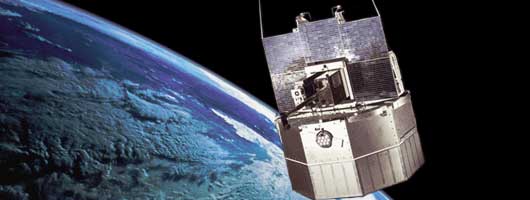OSO-7
Orbiting Solar Observatory-7

Solar X-ray Experiment
Soft X-ray Detector | Hard X-ray Detector | Particle Detectors | Electronics | Performance
The hard x-ray scintillation counter consisted of a 1 cm thick NaI(Tl) crystal with an area of 9.57 cm2 and a 41 mg.cm2 Al entrance window. An active anticoincidence shield of CsI(Na) narrowed the field of view and substantially reduced the background. The central detector's output was pulse height analyzed into 9 logrithmically spaced channels with nominal edges of 11.2, 14.3, 21.2, 32.0, 46.2, 68.2, 99.7, 154, 229, and 342 keV. An 241Am source located between the central detector and the shield produced simultaneous alpha particles and 59.5 keV x-rays, which were used to monitor the conversion gain. The central detector had 15 gain steps of ~7% each by adjusting the photomultiplier tube high voltage.
The hard x-ray detector can also respond to incident charged particles, particularly electrons with energy 200-600 keV, in a manner which mimics the response to photons. To guard against this false signal, the output of a solid state silicon surface barrier charged particle detector (SSD1), sensitive to electrons >100 keV and protons in the 2.6-13.5 keV range, was used to flag NaI(Tl) detector data that might be contaminated. The SSD1 field of view was restricted by an aluminum collimator-absorber to match that of the central detector.
OSO-7 Information
Mission Objectives
Spacecraft
Cosmic X--ray Experiment
Solar X--ray Experiment
Results
Publication